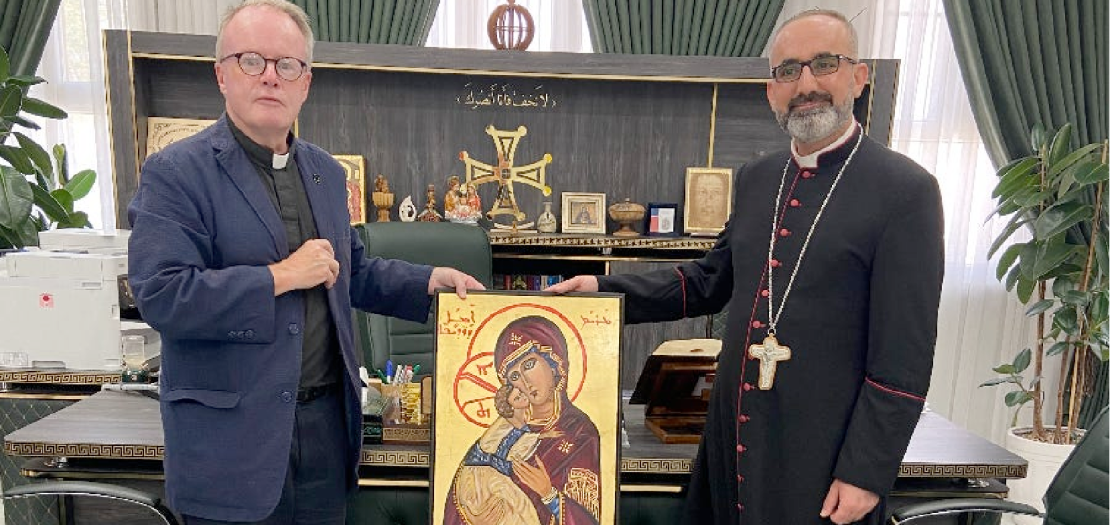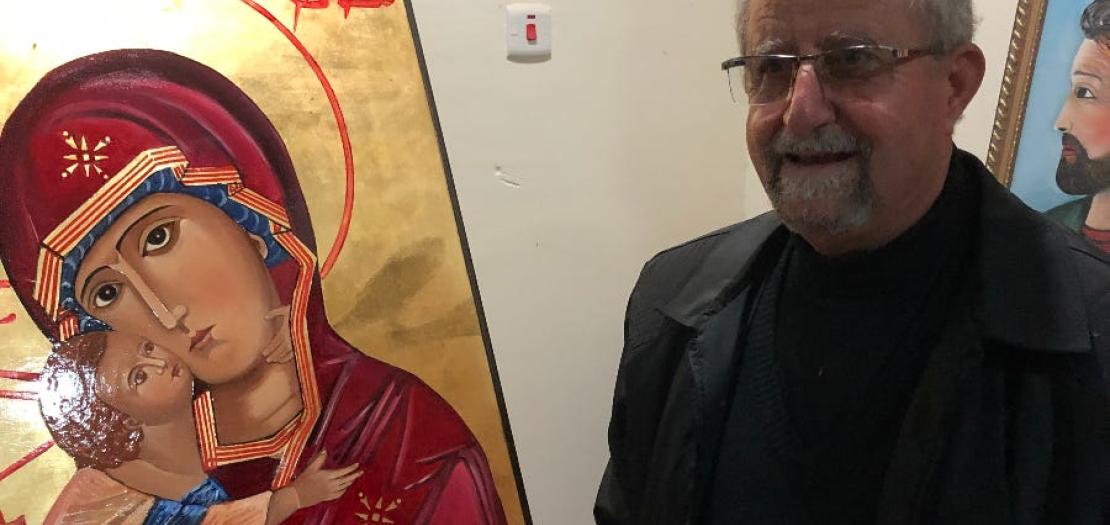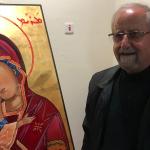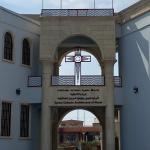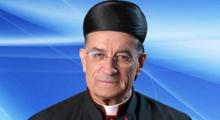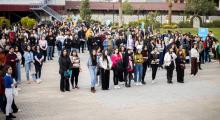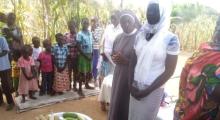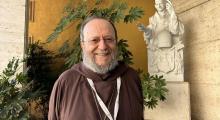Issued by the Catholic Center for Studies and Media - Jordan. Editor-in-chief Fr. Rif'at Bader - موقع أبونا abouna.org
In the heart of Iraq’s Christian homeland, a new sanctuary is taking shape. Qaraqosh, once emptied of its Christian population by the advance of ISIS, will soon host one of only seven shrines in the world dedicated to Mary, Mother of Persecuted Christians.
Its location is no coincidence. Eleven years ago to the day of the sanctuary’s announcement, the city’s ancient Syriac Catholic community fled in the night, leaving homes, churches, and centuries of tradition behind. ISIS had already issued an ultimatum to Christians in nearby Mosul: convert to Islam, pay the jizya tax, or face death. Qaraqosh knew what was coming.
For two years, ISIS turned Christian sanctuaries into firing ranges and military outposts. The liberation of Qaraqosh in 2016 by the Popular Mobilization Forces—predominantly Shiite militias—brought an end to jihadist rule but not to hardship. Christians began returning to a city in ruins, navigating a precarious coexistence under new political and military pressures.
The new shrine will stand within the recently built Church of St. Ephrem, its focal point an icon delivered this August by Father Benedict Kiely, founder of the Vermont-based charity Nasarean.org. Painted by Syriac Catholic deacon Ibraheem Yaldo—himself displaced from his hometown of Bartella in 2014—the icon bears the Aramaic inscription “Mary, Mother of the Persecuted.”
For Archbishop Benedict Younan Hano, who heads the Syriac Catholic Archeparchy of Mosul from Qaraqosh, the timing is deliberate. “It is a sign that faith endures,” he says, “even in the very place where our largest Christian city was taken and desecrated.” Hano hopes the shrine will prod Western Christians to pray for their brethren in the Middle East, and to remember that Christianity’s roots run deep in these lands, as Pope Leo XIV reminded Eastern Christians earlier this year.
The Syriac Catholic Church—one of 23 Eastern Catholic Churches in full communion with Rome—still prays in Syriac, a dialect of the language spoken by Christ and the apostles. In Iraq, its faithful form the second-largest Catholic community after the Chaldean Church. But their numbers have plummeted: from 1.5 million Christians nationwide in 2003 to perhaps 150,000 today, with the exodus accelerating under ISIS’s reign of terror between 2014 and 2017.
Six other shrines to Mary, Mother of Persecuted Christians, already exist in the United States, the United Kingdom, Sweden, and Kazakhstan. The Qaraqosh shrine will be the first in the Middle East. Kiely’s charity plans to add three more worldwide by 2026.
Standing in Qaraqosh today, it is hard to reconcile the silence of rebuilt streets with the chaos that emptied them. The sanctuary, once complete, will do more than honor the past—it will be a reminder to the world that a community once marked for erasure still kneels to pray in the language of its ancestors.


